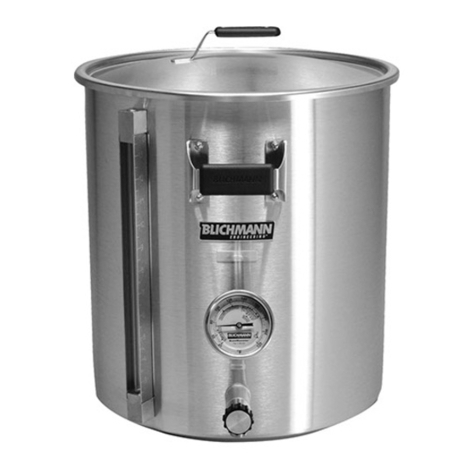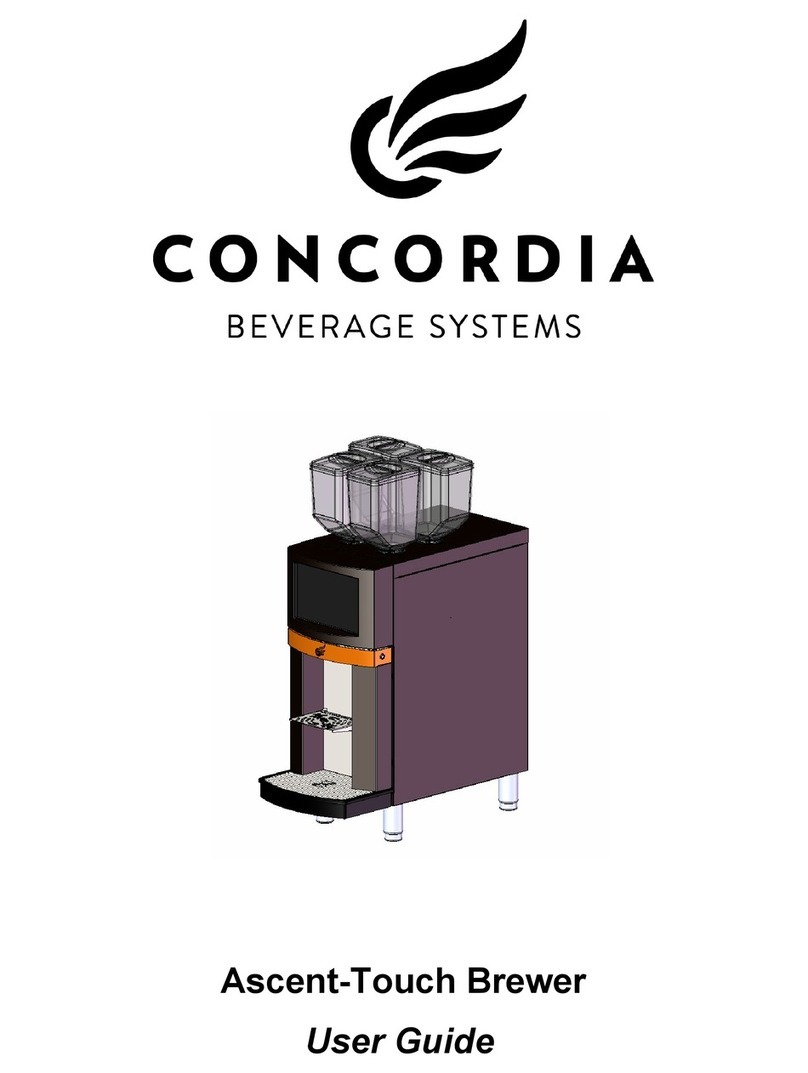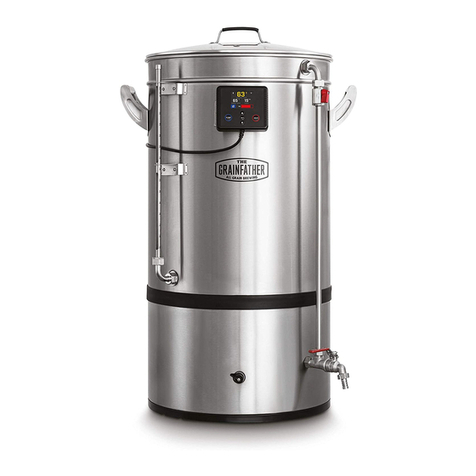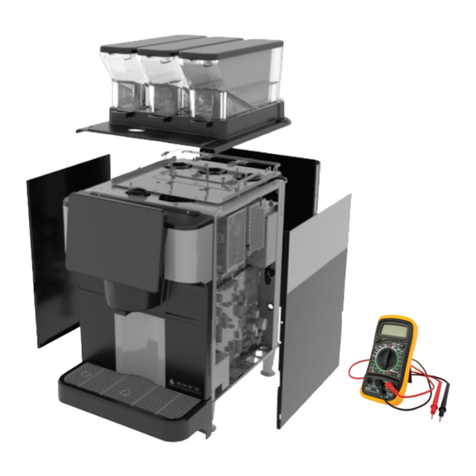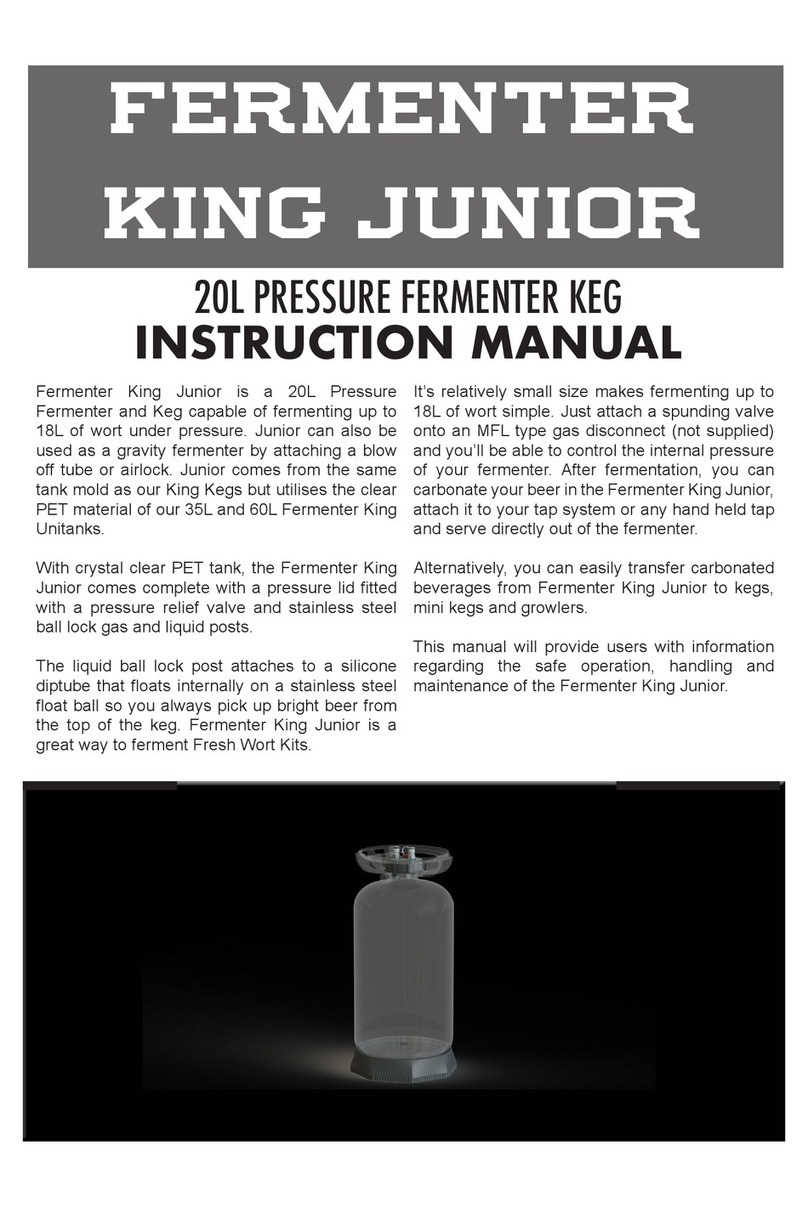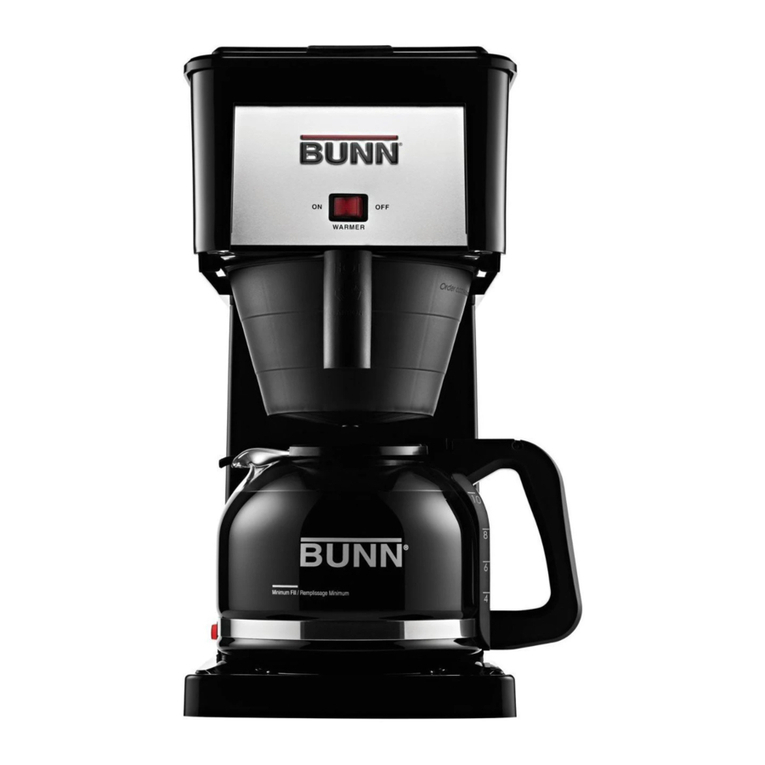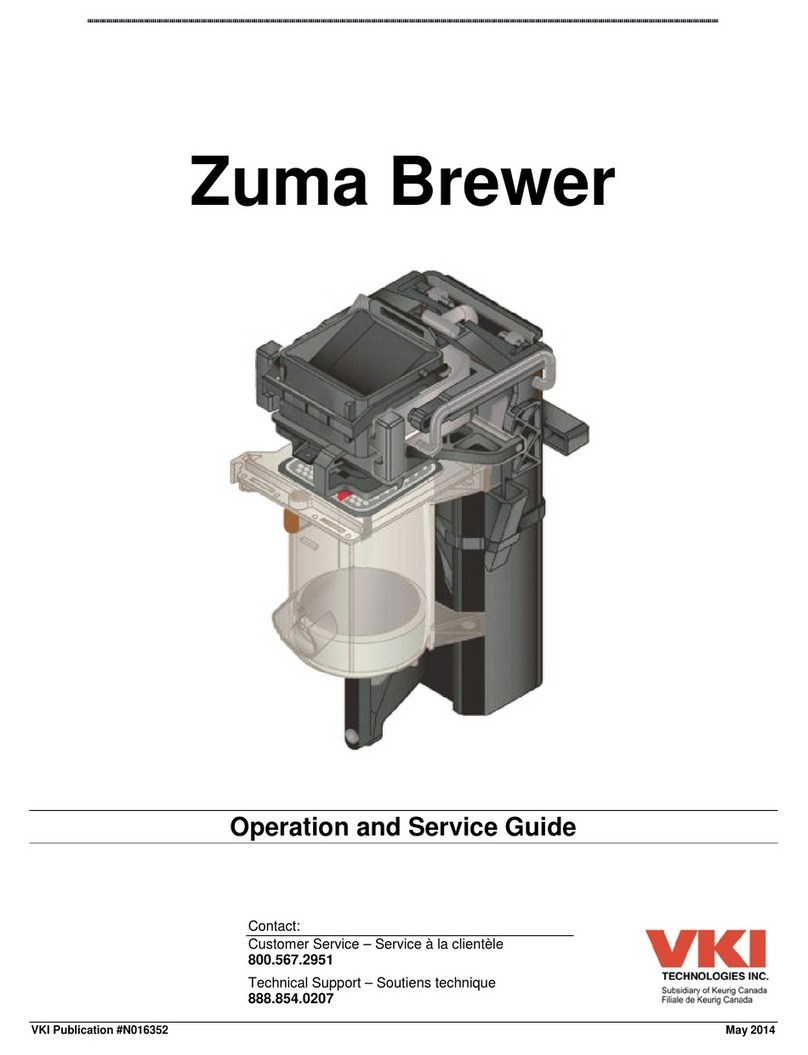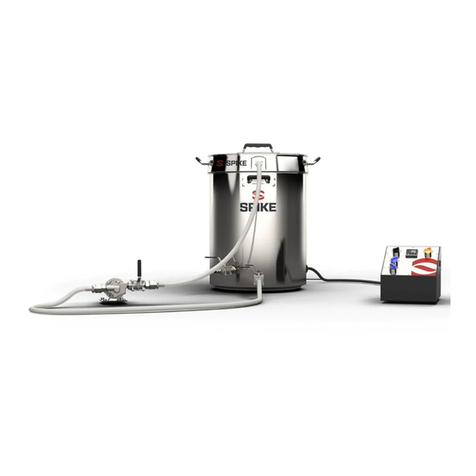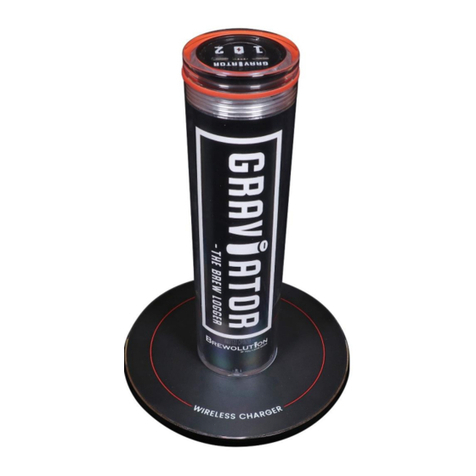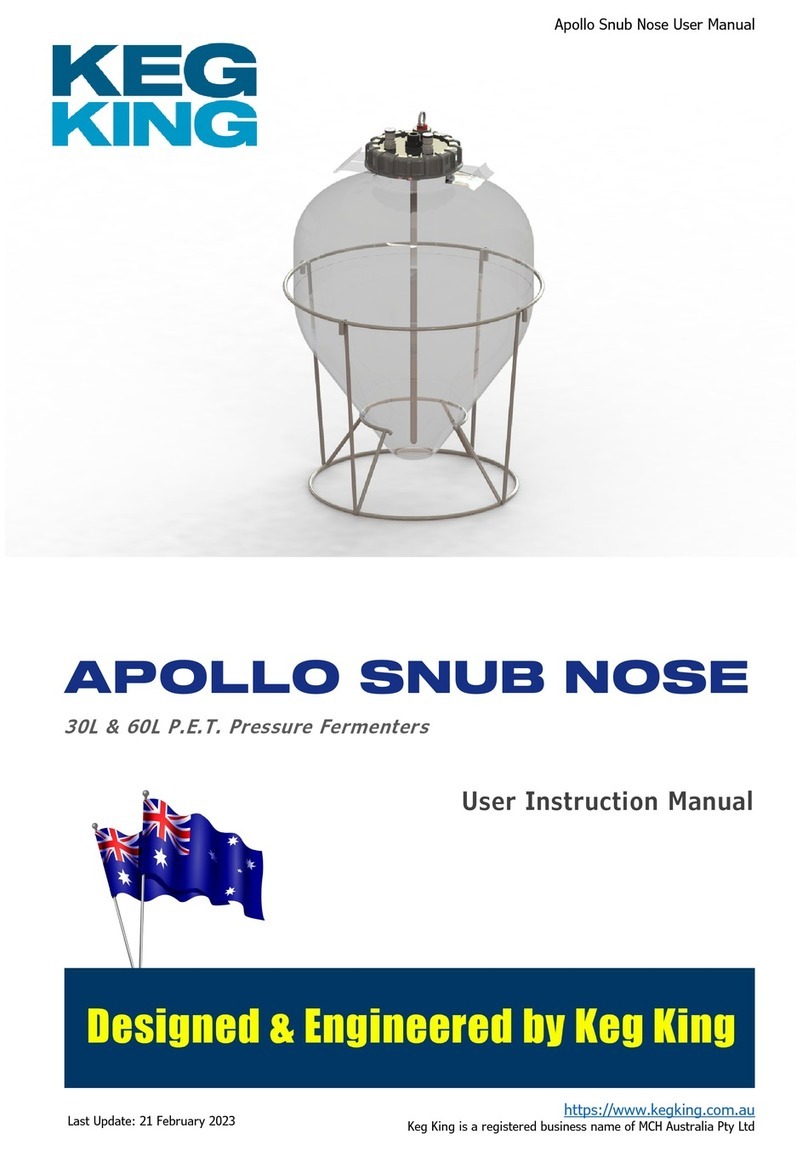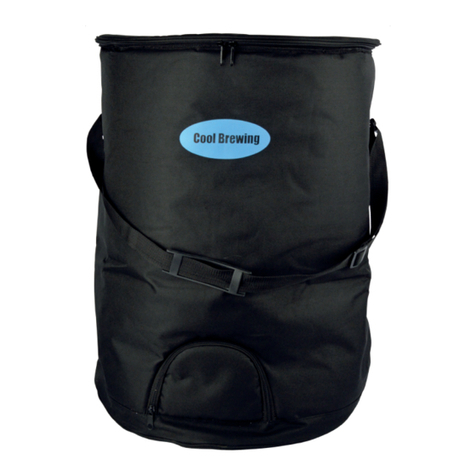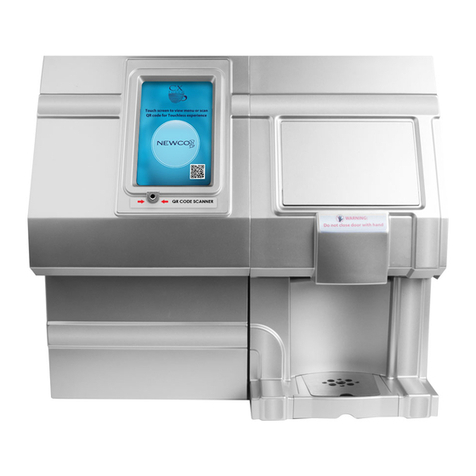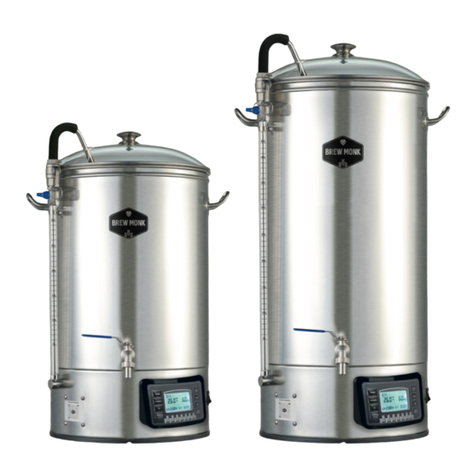
5. To fill your keg with your homebrew you will need to clean and sanitize it first. A general pre-sanitizing cleaning of
the keg can be performed by scrubbing the inside with a scotch brite pad or carboy brush (if you can’t reach into the
keg). Remember that you must always clean before you sanitize. Do not use chlorine to sanitize stainless steel as the
bleach can pit the stainless steel. Star San, IO Star, or Sani Clean are the recommended sanitizers. We also recom-
mend that you remove the valves and lid and sanitize those as well.
6. After filling your keg and reattaching the lid, flush the headspace with CO2by filling with CO2and releasing the
valve on top of the keg lid. Do this 3–5 times to eectively remove the oxygen from the keg.
CARBONATION
Carbonation is influenced by both temperature and pressure. The lower the temperature of the liquid, the higher the
CO2pressure, and the more surface area for contact between the liquid and CO2, the easier CO2goes into solution.
Thus the fastest way to carbonate your beer is to chill it down as much as possible, turn the CO2to about 30 lbs psi,
and shake it for around 3 minutes. A better quick method is to use the chart below. Select your temperature and de-
sired volume of CO2(2.2–2.7 is a good range to start with) and shake the keg until no more CO2goes into solution.
For those who want to carbonate like the pros (quickly, with precision, and without shaking), we do sell a carbonation
stone. It hooks to the inside of the CO2“In” valve and hangs to the bottom of the keg. The stainless steel stone re-
leases thousands of .5–2 micron bubbles of CO2, creating so much surface area that the CO2is instantly absorbed
into solution until saturation is reached at whatever level of carbonation you choose.
The paragraph above explains how to carbonate fast when you need it quick, but just like bottling, your beer is going
to benefit from a week or two of aging. What most people do is hook the keg up at whatever pressure CO2they are
going to dispense at, on average around 8–12 psi. Leave it on, in the refrigerator, for 1–2 weeks after which time the
beer will be carbonated. Our personal method of carbonation is to keep our refrigerator at around 38°F. We hook up
the gas line assembly to the keg, adjust pressure to 10 psi, and leave it for one week.
A keg of beer can be thought of as having two parts: the beer (liquid) and the headspace (gas). These two parts want to
equalize the pressure — your beer will keep accepting CO2until the pressures are equal. If you leave your flat beer with
30 psi of CO2in the headspace, you will eventually end up with fizz as the beer keeps accepting CO2into solution in
an attempt to equalize the pressures. If you have a carbonated beverage of any sort (beer, soda, seltzer) and you have
no pressure in the headspace, the CO2comes out of solution to try and equalize the pressure between the liquid and
the gas (headspace). You witness this every time you buy a 2 liter soda bottle and it goes flat in a few days. So the idea
is to equalize them at the carbonation level you prefer. The easiest way to do this is to carbonate at the pressure you
dispense. It may take a couple of days longer, but your beer ages and clears and dispenses very nicely without foaming
problems.
SERVING YOUR BEER:
After drawing o the first few pints, all the sediment around the dip tube in the bottom will be drawn o and you will
start to get clear beer. A nice benefit of the keg is since it is constantly aging at a very cold temperature, the chill haze
you see when you chill a bottle of homebrew will settle out within a few weeks.
HOW TO READ THE CARBONATION CHART
First choose the average temperature of the beer on the left side of the chart and then find the level of carbonation
you want in the center of the chart. Once you have determined the carbonation level, follow the column up to the top
of the chart to find your psi setting.
